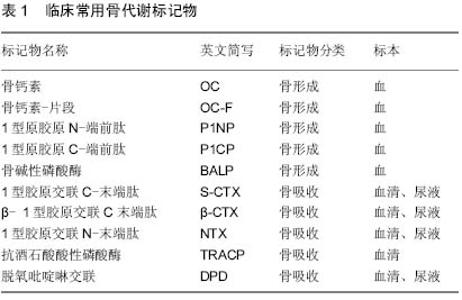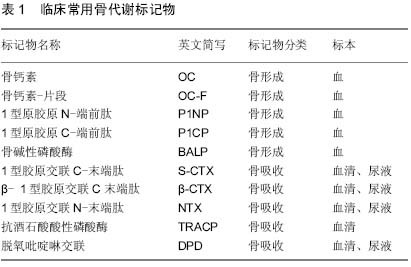| [1] |
Shen Jinbo, Zhang Lin.
Micro-injury of the Achilles tendon caused by acute exhaustive exercise in rats: ultrastructural changes and mechanism
[J]. Chinese Journal of Tissue Engineering Research, 2021, 25(8): 1190-1195.
|
| [2] |
Tang Hui, Yao Zhihao, Luo Daowen, Peng Shuanglin, Yang Shuanglin, Wang Lang, Xiao Jingang.
High fat and high sugar diet combined with streptozotocin to establish a rat model of type 2 diabetic osteoporosis
[J]. Chinese Journal of Tissue Engineering Research, 2021, 25(8): 1207-1211.
|
| [3] |
Li Zhongfeng, Chen Minghai, Fan Yinuo, Wei Qiushi, He Wei, Chen Zhenqiu.
Mechanism of Yougui Yin for steroid-induced femoral head necrosis based on network pharmacology
[J]. Chinese Journal of Tissue Engineering Research, 2021, 25(8): 1256-1263.
|
| [4] |
Liang Xueqi, Guo Lijiao, Chen Hejie, Wu Jie, Sun Yaqi, Xing Zhikun, Zou Hailiang, Chen Xueling, Wu Xiangwei.
Alveolar echinococcosis protoscolices inhibits the differentiation of bone marrow mesenchymal stem cells into fibroblasts
[J]. Chinese Journal of Tissue Engineering Research, 2021, 25(7): 996-1001.
|
| [5] |
Duan Liyun, Cao Xiaocang.
Human placenta mesenchymal stem cells-derived extracellular vesicles regulate collagen deposition in intestinal mucosa of mice with colitis
[J]. Chinese Journal of Tissue Engineering Research, 2021, 25(7): 1026-1031.
|
| [6] |
Hou Guangyuan, Zhang Jixue, Zhang Zhijun, Meng Xianghui, Duan Wen, Gao Weilu.
Bone cement pedicle screw fixation and fusion in the treatment of degenerative spinal disease with osteoporosis: one-year follow-up
[J]. Chinese Journal of Tissue Engineering Research, 2021, 25(6): 878-883.
|
| [7] |
Yang Weiqiang, Ding Tong, Yang Weike, Jiang Zhengang.
Combined variable stress plate internal fixation affects changes of bone histiocyte function and bone mineral density at the fractured end of goat femur
[J]. Chinese Journal of Tissue Engineering Research, 2021, 25(6): 890-894.
|
| [8] |
Li Shibin, Lai Yu, Zhou Yi, Liao Jianzhao, Zhang Xiaoyun, Zhang Xuan.
Pathogenesis of hormonal osteonecrosis of the femoral head and the target effect of related signaling pathways
[J]. Chinese Journal of Tissue Engineering Research, 2021, 25(6): 935-941.
|
| [9] |
Xiao Fangjun, Chen Shudong, Luan Jiyao, Hou Yu, He Kun, Lin Dingkun.
An insight into the mechanism of Salvia miltiorrhiza intervention on osteoporosis based on network pharmacology
[J]. Chinese Journal of Tissue Engineering Research, 2021, 25(5): 772-778.
|
| [10] |
Liu Bo, Chen Xianghe, Yang Kang, Yu Huilin, Lu Pengcheng.
Mechanism of DNA methylation in exercise intervention for osteoporosis
[J]. Chinese Journal of Tissue Engineering Research, 2021, 25(5): 791-797.
|
| [11] |
Liu Liu, Zhou Qingzhu, Gong Zhuo, Liu Boyan, Yang Bin, Zhao Xian.
Characteristics and manufacturing techniques of collagen/inorganic materials for constructing tissue-engineered bone
[J]. Chinese Journal of Tissue Engineering Research, 2021, 25(4): 607-613.
|
| [12] |
Nie Shaobo, Li Jiantao, Sun Jien, Zhao Zhe, Zhao Yanpeng, Zhang Licheng, Tang Peifu.
Mechanical stability of medial support nail in treatment of severe osteoporotic intertrochanteric fracture
[J]. Chinese Journal of Tissue Engineering Research, 2021, 25(3): 329-333.
|
| [13] |
Zhong Yuanming, Wan Tong, Zhong Xifeng, Wu Zhuotan, He Bingkun, Wu Sixian.
Meta-analysis of the efficacy and safety of percutaneous curved vertebroplasty and unilateral pedicle approach percutaneous vertebroplasty in the treatment of osteoporotic vertebral compression fracture
[J]. Chinese Journal of Tissue Engineering Research, 2021, 25(3): 456-462.
|
| [14] |
Xu Xiaoming, Chen Yan, Song Qian, Yuan Lu, Gu Jiaming, Zhang Lijuan, Geng Jie, Dong Jian.
Human placenta derived mesenchymal stem cell gel promotes the healing of radiation skin damage in SD rats
[J]. Chinese Journal of Tissue Engineering Research, 2021, 25(25): 3976-3980.
|
| [15] |
Zhu Yun, Chen Yu, Qiu Hao, Liu Dun, Jin Guorong, Chen Shimou, Weng Zheng.
Finite element analysis for treatment of osteoporotic femoral fracture with far cortical locking screw
[J]. Chinese Journal of Tissue Engineering Research, 2021, 25(24): 3832-3837.
|

